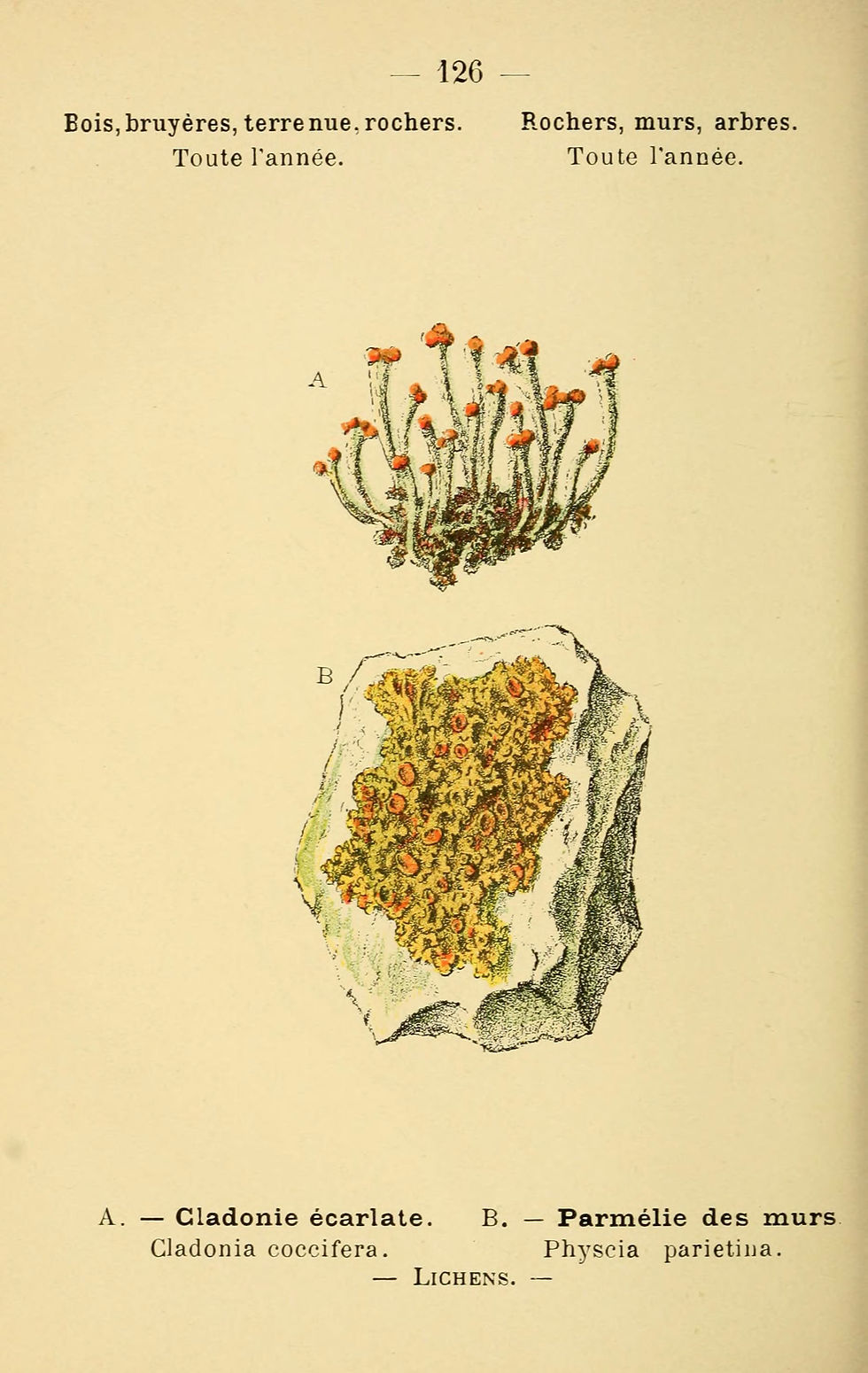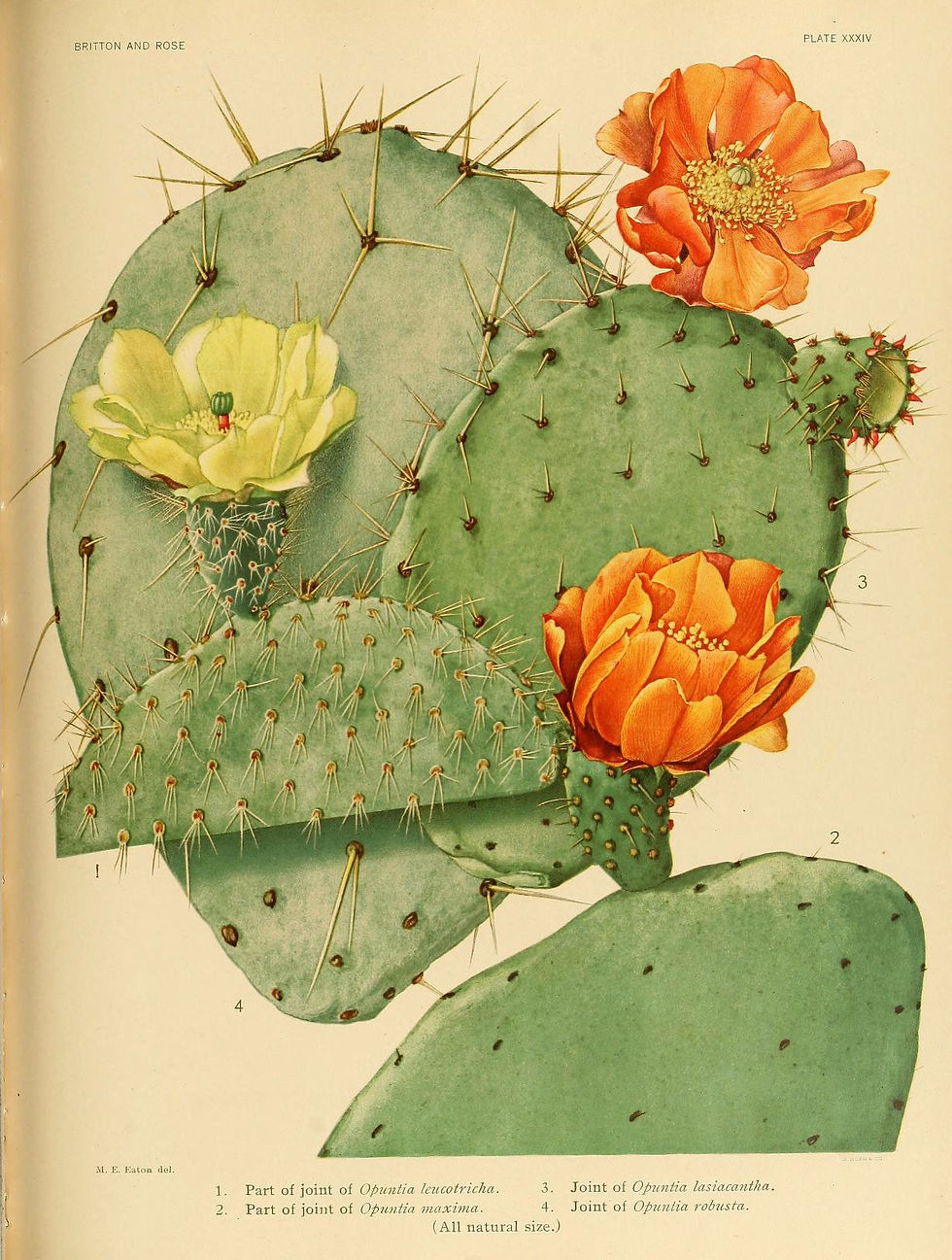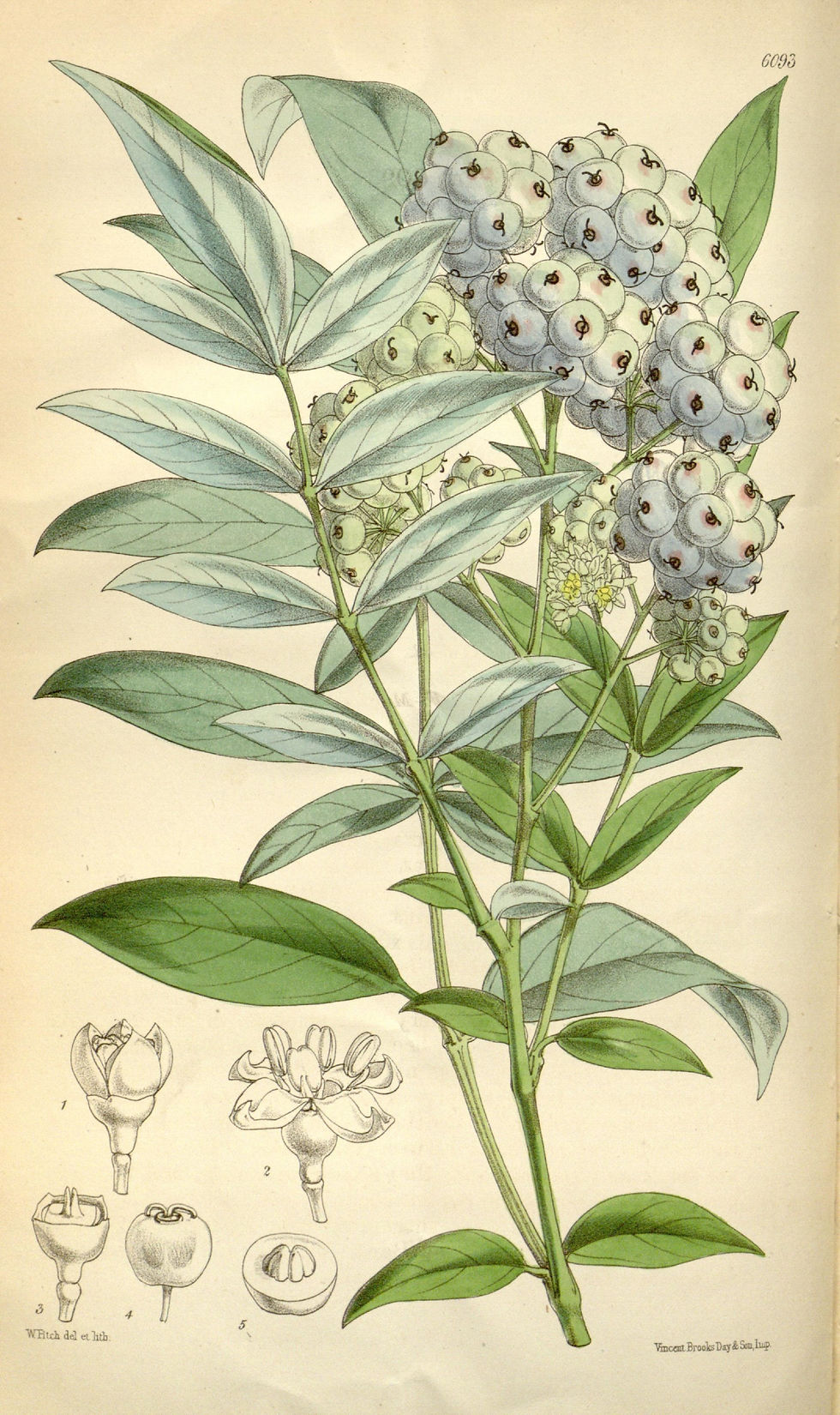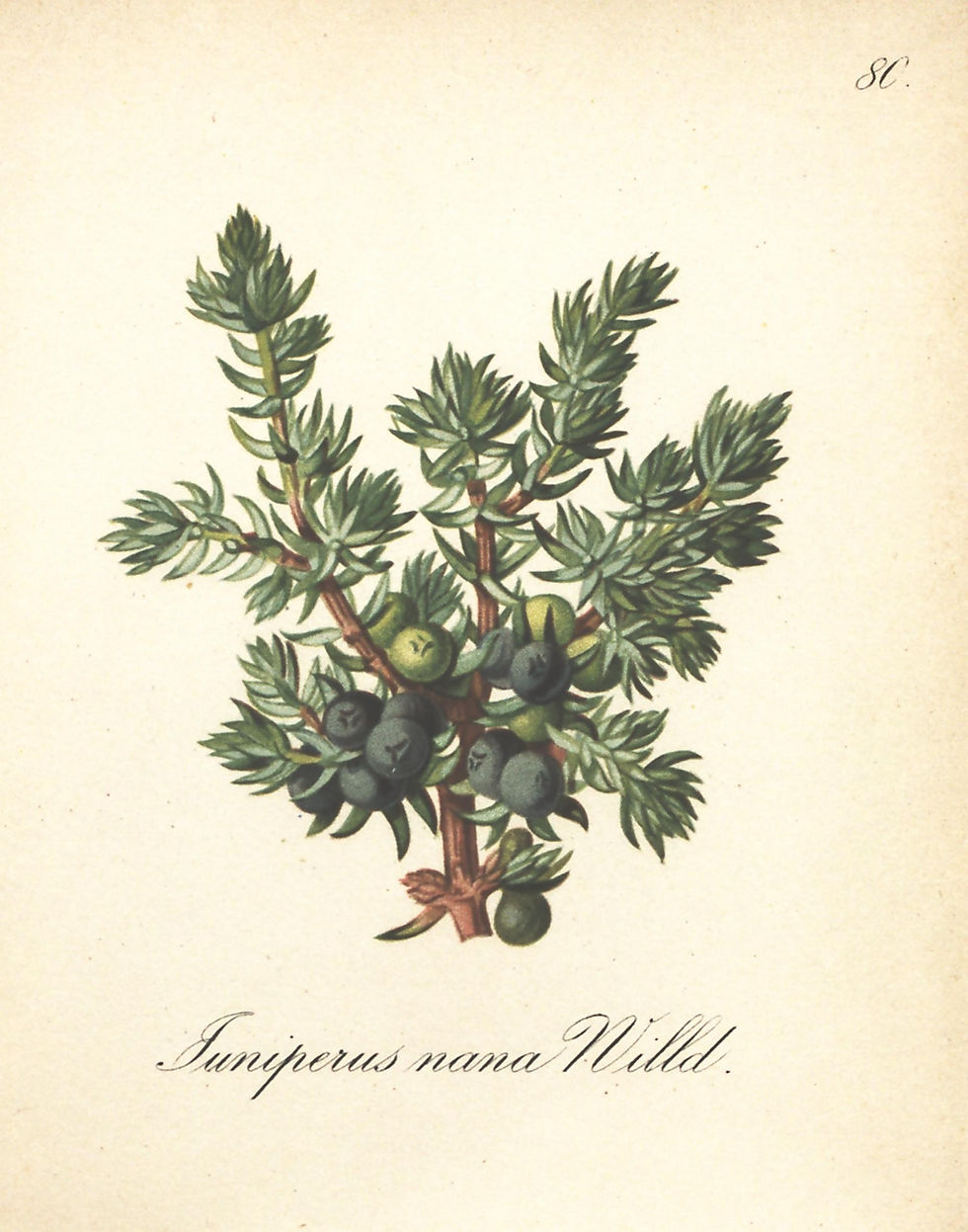Crafting in the Arctic, Coast, and Desert | Dungeons & Dragons
It happens to all of us. You know, the dreaded “we don’t have a healer in the party” moment. It happens. It’s part of nature. Now, I get it. It’s easy to ask your DM, “Can I make a healing potion?” Usually if you have the right kit and a proficiency, you can make something. But, what if you don’t? Also, what if you are the dedicated potion person and want something more than just making a check to see if you make a potion out of thin air?

Well, you’ve come to the right jellyfish-human!
Grab your alchemy and/or your herbalism kit, and let’s start experimenting. As always, we’re here to expand on pre-existing Dungeons and Dragons content to enhance the roleplay experience, scratch curiosity, and inspire more ideas. Also, like, don’t go around eating this stuff in real life, unless it’s properly prepared. This is purely for fictional, gaming purposes.
Alright, not every campaign is the same. Whether it be the dark and creepy Out of the Abyss or the wacky world of The Wild Beyond the Witchlight, setting is arguably the most important thing in a campaign. It is called “world-building” after all! So, I think it’s reasonable to assume a Potion of Healing (henceforth known as PoH) made with environment specific ingredients will produce the same outcome: an increase in health. There’s no one cut and dry way to make these.
Let’s look at what the Player’s Handbook says:
There are 4 types of Potions of Healing: Standard, Greater, Superior, and Supreme
As the potion type increases, so does its rarity and the amount of dice rolled
PoHs must be drank in its entirety to receive the full amount of healing it can give
They’re red
Honestly, I think they’re red because health is typically associated with red and magic or mana is associated with blue. We see it everywhere in gaming, even beyond TTRPG games. The Diablo series popularized it with their red health globe, Breath of the Wild uses red hearts, Skyrim has a red health bar and red healing potions, the Dark Souls games and Elden Ring are known for their players having red health bars the size of skyscrapers. Red is the go-to color for things being health related, as seen in medical crosses and, you know, the Geneva Convention. So, realistically, the color of PoHs would reflect the color of the ingredients used, or if they were put together by someone with magic inclination, the potion could be magically colored red to represent life essence.
That doesn’t mean I’m going to not look for red ingredients with healing properties. I can, and you bet I will find things that are red.
As per usual, we’ll be drawing upon real life herbs and concoctions that would be feasible as is but can also be glamoured up to be more fantastical.
There is one thing that should be decided when playing and that’s quantity and quality. Now, in a game like Skyrim, for example, the amount of healing received is dictated by the amount of liquid drank. A Philter of Health in that game is just a larger quantity of the regular Potion of Health. Would the same apply here as well? Is a Superior PoH just a larger quantity of the Standard one? Or, is it the same amount, just with a stronger concentration? Is rarity dictated by the quality of ingredients? For example, brownies made with store brand versus luxury cocoa powder.
Ok, exhale. That can be a head spinner to decide – if you even want to take it that far. Ultimately, it’s up to you; I’m just a jellyfish-human hybrid that overcomplicates things.
Cooking Up Potions of Healing, with Science
Let’s talk ingredients. There’s a million and one herbs and animal matter that can be used in making medicine. For this reason, priority will be given to ingredients that are already liquid, can be boiled in water (called “decoction”), can have liquid extracted, or can be powdered/dissolved to be added to a liquid. Bonus points if they’re red.
I also looked for ingredients that helped with reducing fevers, helped when generally feeling under the weather, triggered an immune system response, or provided environment specific replenishments (such as helping with frostbite or heat). In addition, I stuck to the healing mechanic of Dungeons and Dragons, where ingesting a PoH can fix most issues.
We’ll be covering Arctic, Coastal, and Desert environments in Part One of how to make PoHs in different environments.
The Arctic
Seems like Rime of the Frost Maiden makes it very difficult to purchase rare items. If you’re left without a way to heal, here are some ideas to make PoHs:

According to Arctic Anthropology, seal blood and broth made from the meat (specifically the liver) are beneficial in replenishing the body’s nutrients and increasing blood flow to combat hypothermia and chills. Inuit elders consider vasodilation to be indicative of a strong body, and some claim that you can see your wrist veins dilate after consuming seal blood and/or meat. Seal meat is high in omega-3 fatty acids, which lowers blood pressure and cholesterol
Fox oil was used to cure skin lesions and itching, while liquid seal oil promotes blood circulation by increasing the body’s level of “good” cholesterol
Echinopanax horridum (Devil's Club) stems were boiled and the resulting medicinal tea was drunk to help a variety of common ailments, including tuberculosis. However, an Athabascan elder noted that this medicine was very strong and caused sweating when consumed in large amounts. So… that’s not good for being in the arctic, since your body will start to lose heat faster than it can make it. Tribes in the lower Kenai Peninsula noted that boiling the roots creates a medicine to help with food poisoning…by inducing vomiting. Gotta do what you gotta do
Juniperus communis (Juniper); liquid left over from boiling the branches and berries were used for fighting internal organ pain, and the steam from heating the plants was said to keep sickness away, even when inhaled by people who weren’t ill. The liquid strained from squashed berries helped heal general colds, since they’re full of antioxidants
Cladonia spp. (Reindeer Moss) was used in decoctions to help those traveling large distances maintain their wind. This could be used to gain advantage on CON saves against Exhaustion from forced marches
Coastal
Whether it be Ghosts of Saltmarsh or pillaging a lizard-folk town, coastal regions are home to so many kinds of organisms. Remember not to ingest straight-up seawater though:

Shark liver oil contains alkylglycerol (stimulates immune system response), squalene (precursor to steroids), and omega-3 fatty acid (reduce inflammation)
Early West African cultures used sea turtle fat to treat fevers, fainting problems, and trauma like shock. The fat is usually melted in the sun and is either consumed alone or mixed with honey
Mānuka leaves boiled with water were said to ease fevers, in Māori culture. The honey from the Mānuka tree (Leptospermum) is a very effective all-purpose topical and has antibacterial properties when ingested, since its components inhibit bacterial growth in a process called septal ring alteration (you know when cells split, and they look like a Venn diagram? Honey essentially messes with the part where they connect, so they can't split into two cells)
Cymbopogon (known as “Fever Grass” and Lemongrass) in Caribbean cultures was used to, as the name says, reduce fevers. It’s full of antioxidants that trigger immune system response and is typically decocted
Sideritis Syriaca also known as Ironwort and Greek Mountain Tea has been described as healing anything that ails the human body from colds, to fevers, to anxiety
Desert
Circle of the Land Druids know traditions and rites passed down through generations. I’m sure there’s a healing potion recipe in there somewhere. While there isn’t a desert based 5e book currently out, arid climates can be integrated into most campaigns:

Aconitum heterophyllum (Atish) roots were boiled with water and the decoction was drank to lower fevers, according to Indian folk medicine. It was also ground and formed into tablets to fight fever. You know, like Alka Seltzer. Wait, is Alka Seltzer a potion?
Cremanthodium ellisi (Himilayan Mini Sunflower) was powdered whole with pomegranates, rock salt, and ginger to alleviate fevers. It, too, was ground into tablets and could be mixed with boiling water, as seen in Ladakh Himalaya
Opuntia basilaris (Prickly Pear) juice is used in North American and Mexican cultures as a hangover cure. This could be used to lower a level of exhaustion
Sambucus nigra (Elderberry) when decocted was used to cure general illnesses and aches, while the juice from the berries boosts the immune system
Aloe Vera juice can reduce fevers and pains, due to containing salicylic acid, the main ingredient in aspirin
An Aside About Antioxidants
Alright, let's talk antioxidants. Antioxidants appeared a lot on the ingredient lists, so let's discuss. It's one of those terms we hear a lot, kind of thrown around with "vitamins and minerals." Antioxidants consist of the vitamins we're all familiar with: Vitamin C, Vitamin E, Beta-Carotene, etc. We know they're good, we know we want them, but how exactly do they work?
Well, first it's time to learn about free radicals. Free radicals, other than sounding like a name you'd give a mischievous cat, are a molecule with an unpaired electron. The good thing about life science is that it intertwines with so many other fields of science, so let's defrost our chemistry knowledge, for what exactly that means.

Molecules are made up of protons, neutrons, and electrons. Protons are positive, neutrons are neutral, and electrons are depressed. Just kidding, they're negative. Electrons orbit a nucleus made up of protons and neutrons. Now, electrons are negative, which means in order to be content, they like to orbit in pairs that spin in opposite directions. A free radical is a molecule with a lonely electron that doesn't have a pair, and therefore searches until it can find its other half. Free radicals are unstable molecules, because they're lonely. So, they can do one of two things: donate an electron to another molecule or receive an electron from another molecule.
Okay, so this is beginning to sound like free radical slander, but free radicals can either be beneficial or harmful. But, we'll be focusing on free radicals in relation to injury. When the body's immune system kicks up to fight off illness, it releases free radicals during inflammation and immune cell response. Antioxidants essentially swoop in with that second electron and gives it to the free radical before they can start rampaging through the body.
Sure, Vitamin E, Vitamin C, and all their friends are beneficial to the body, but they're typically just supplements, when paired with modern injury and illness treatments. The thing with Dungeons and Dragons is the absence of modern medicine; however, we're proposing that there can be scientific reasons behind the fantastical plants your party encounters on their journey. Maybe the plants in Faerûn, or wherever your campaign is set, are all chock full of antioxidants that rival the benefits of a Tylenol Extra-Strength? Maybe they function as they do scientifically, but the presence of magic in the world boosts their effectiveness?
Either way, don't try and fix real life cataracts by eating a cantaloupe, for real.
Making and Eating
Some of these ingredients might be straight up bitter to ingest, or at the very least will have a complex flavor possibly full of different textures. When making something to be consumed, we’ll follow this simple recipe:
Liquid Base, Healing Agent, Sweetener
Liquid Base could be water, blood, oils, or juices. Depending on the liquid, the potion might have to be consumed quickly to prevent separation.
Healing Agents are any additives brought into the mixture to promote healing. These would be the herbs, the decoction from the herbs (if boiled separately in water), and the pressed ingredient tablets.
Sweeteners here don’t necessarily mean sugar. It just needs to be something to make the potion go down easily. Some Liquid Bases and Healing Agents are naturally palatable, like honey, Prickly Pear juice, Aloe Vera juice, and Ironwort tea. But, I mean, there’s a reason sea turtle fat is also consumed with honey, you know?
That being said, here’s some sample recipes to create, following that the Dungeon Masters Guide says that potions are typically 1oz/30ml:
Arctic Recipes
Decoct juniper leaves and berries with 20ml of water. Strain and mix with 10mL seal blood or broth
Make a medicine check, adding proficiency if using an herbalism or alchemy kit. If you pass, the potion is fine. If you fail the check, the potion is still made, but made a CON save to see if you become poisoned
Coastal Recipes
Melt 10ml sea turtle fat and add to a 10ml decoction of Lemongrass and water. Finish with 10mL of honey, shake vigorously, and consume within 1d4 minutes
You could add in a bird egg yolk and emulsify into a thicker, but more stable potion (remove 1d4 timer)
Desert Recipes
Mix 10ml of Prickly Pear juice, Aloe Vera juice, and Elderberry juice
This one’s pretty straightforward and probably tastes the best
Of course, you aren't limited to these – those are just examples.
Okay, let's talk about using these in game.
We've leaned heavily into homeopathy here, and we've gotta take into account the weirdness of Dungeons and Dragons. Let's say your character gets struck by lightning and falls out of a tree. In real life, no amount of Prickly Pear and Elderberry can fix that. I know that, you know that, moving on. So, I think, in order to make – I'll call them "Foraged Potions of Healing," integrate with your settings, definitely dress them up. Here, we've looked at real life plants as ideas for something more fantastical.

Let's say you're playing Rime of the Frostmaiden, right, your party's suffering because your healer couldn't make it to the session, and there isn't a shop in sight. They're weary, and the next random encounter is going to be a pain. Perhaps they've come across bushes of berries along their journey, and they're bright red, green, and blue, glowing amidst the frost.
You tell your party that these are called Jewelry Berries, and when juiced, boiled, and consumed with seal blood and fox oil via an herbalism and/or alchemy kit, the resulting potion gives back 4d4+4 health. The entire party gets 1d4+4 health back, since even inhaling the steam when the potion's being brewed is beneficial.
That is a new method of creating a potion, integrated with your setting, using actual plants (in this example, it was Juniper) and science as a basis for creation.
You know what I mean? It's operating with magical ingredients in a scientific way.
Potion of Healing: Final Thoughts
A Potion of Healing is one of the most essential Dungeons and Dragons items, and coming up with ways to regularly have them available to players helps make situations where a healer is unavailable seem less bleak. We’ve covered Arctic, Coastal, and Desert environments this time, but there’s still more environments to cover, from Mountains, to Swamps, to the Underdark. Plus, it always feels good to make use out of the kits your characters are given, to really add immersion. It’s always fun to expand on what Dungeons and Dragons gives us to work with!


Comentários